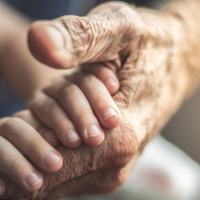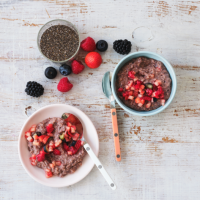It is a common belief that glowing skin is a sign of a healthy, happy pregnancy. Unfortunately for a lot of women, a rosy, radiant complexion isn’t a given.
Instead, many expecting mothers experience troubles with acne, dark spots, increased hair growth, a decrease in skin’s elasticity, melasma, and other changes in their skin they weren’t expecting.
So, what can women expect post pregnancy and how can they balance out skin health?
Dr Oates FRACS of Academy Face & Body says “ We see plenty of women who have concerns following pregnancy. Some are keen to restart muscle relaxer or filler injections but many have skin changes directly related to pregnancy like pigmentation, acne, hair growth and acne. The other is women are even more rushed and time poor with a new child. Lack of sleep and dropping their usual skin care routine means they are looking for something to make a difference they can see. The Venus Versa is well equipped to address many of these concerns and we find in particular the IPL photorejuvenation and Viva nanofractional RF, are the tools making the difference they are wanting.”
To help women understand these changes, Venus Concept has shared some of the most common ways that pregnancy can alter skin health and how the effects may be able to be reversed:
Acne Breakouts
- According to top skin care experts, shifts in hormone levels, oil production, and a rise in blood volume may be credited for that pregnancy glow. However, these changes, particularly the increase in oil production, may also be the root cause of acne breakouts. Hormone fluctuations as well as a boost in blood volume can kick oil production into high gear, leading to excess sebum and a higher likelihood that dead skin cells will stick to the skin’s surface and clog pores. If you are pregnant or nursing, it is best to consult a dermatologist for safe natural treatments for acne control. But, for those who have given birth and are not breastfeeding an acne treatment plan that utilises targeted Intense Pulsed Light (IPL) to fend off continued breakouts while the skin works to regain its balance is a great option! The treatment gives skin a better chance of not only reining in breakouts, but also properly healing to prevent potential acne scarring.
Melasma and Brown Spots
- Known as the “mask of pregnancy,” melasma is a condition that many pregnant women experience. Linked to a rise in the hormones estrogen and progesterone, as well as a melanocyte-stimulating hormone that has a direct impact on skin tone (melanocyte cells or melanin are what give pigment to the skin), melasma appears as dark brown patches on the face. Melasma is also linked to excessive sun exposure, meaning it’s best to always wear SPF while pregnant and limit sun exposure as much as possible to prevent hyperpigmentation. Post-pregnancy and following nursing, melasma and brown spots are likely to stick around. While it is possible to gradually fade these spots, a customised IPL photofacial treatment may be preferred if you want a quicker outcome. These treatments target dark spots by breaking down melanin concentrations while stimulating skin’s natural healing cycle for clearer, more even-toned skin.
Hair Growth
- While thick, flowing locks may seem like the dream, unfortunately pregnancy hormones don’t just increase hair growth on the head. Hair generally grows for a period of two to six years before experiencing a short resting phase, then falling out. Hormone fluctuations during pregnancy can extend hair’s resting time between the growth and shedding stages, meaning thicker hair everywhere. Following pregnancy, customised hair removal treatments can help get hair growth back under control. These treatments utilise energy that is transferred to heat and targeted at hair follicles in the growth or anagen phase, destroying the follicle and inhibiting future growth. The result is gorgeous, smooth skin alongside a permanent reduction in hair growth that may help a busy mom save a little extra time.
Stretch Marks
- One of the most commonly discussed skin changes following pregnancy, stretch marks occur as areas of the body stretch to accommodate for a growing baby. Stretch marks are a result of a tear in the middle layer of skin, called the dermis, following rapid stretching. When this happens, the collagen fibres that give skin its structure break and blood vessels become visible through the weakened skin. As the skin attempts to patch up the tear, collagen and elastin fibres are laid haphazardly, leading to variations in texture. While stretch marks cannot be fully removed, the appearance of them can be reduced with radio frequency-based skin resurfacing treatments. Safe and effective for all skin tones, these treatments utilise tiny pins to effectively deliver heat via radio frequency (RF) energy to the affected dermis, kick-starting the skin’s natural healing process. By stimulating an increase in the production of collagen and elastin fibres, these treatments repair signs of visible textural irregularities, resulting in smoother, healthier-looking skin!
The body goes through a lot of changes during pregnancy, some that women may be prepared for others that may surprise them. For some, these changes may be a reminder of strength. For others, they may know internally the ways they have grown and look to shape their body their own way. Whatever your personal choices may be, for those seeking aesthetic treatments, ensure you visit a trusted certified treatment provider for the best treatment outcome and know that for some treatments, if you are nursing, you may need to wait until you’re done to begin your customised treatment plan.
What happened to your skin after pregnancy? Tell us in the comments below.























9:14 am
7:42 pm
12:17 am
8:44 am
9:31 pm
6:52 pm
1:46 pm
7:55 am
11:41 pm
11:07 pm
1:59 pm
10:01 am
8:47 am
11:37 pm
10:09 pm
10:07 pm
9:53 pm
9:38 pm
8:34 pm
5:58 pm
- 1
- 2
- »
Post a commentTo post a review/comment please join us or login so we can allocate your points.